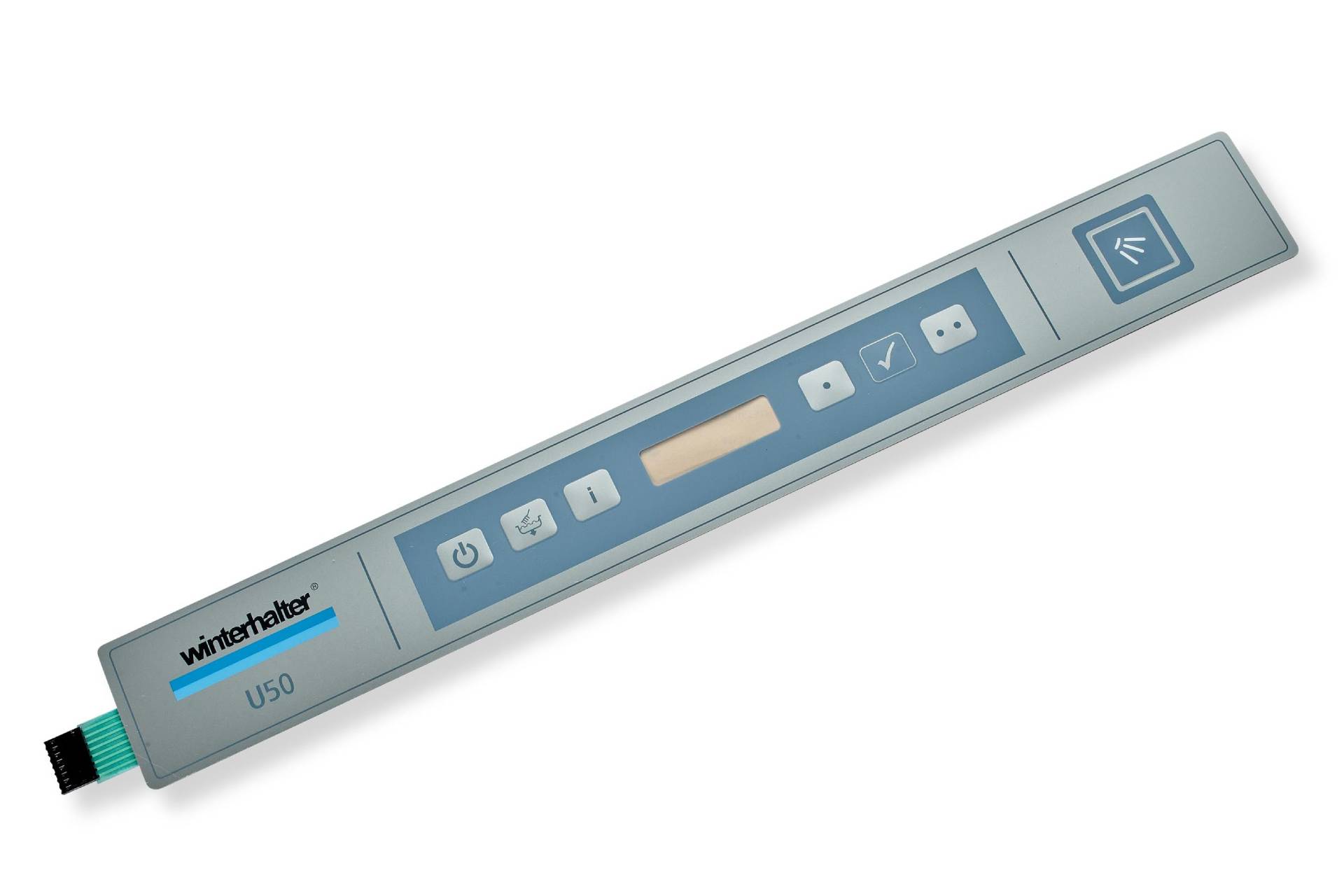How membrane switch is revolutionizing user interaction in medical devices
Recognizing the Value of Membrane Switch in Modern Electronics
Membrane layer switches are integral elements in modern electronic tools. They supply a blend of performance and layout that boosts customer communication. Their durable and light-weight nature makes them ideal for different applications. As sectors evolve, the need for personalization and progressed features expands. Comprehending exactly how membrane layer switches over add to technology discloses their significance fit the future of electronic devices. What lies in advance for this innovation?
The Essentials of Membrane Layer Switch Modern Technology
Although commonly overlooked, membrane layer button modern technology plays an essential duty in the modern-day electronic devices landscape - membrane switch. These tools, composed of numerous layers, work as interface for numerous digital products, ranging from home devices to clinical tools. A regular membrane layer switch contains a visuals overlay, a spacer layer, and a circuit layer, which are diligently assembled to produce a functional interface.When stress is used to the overlay, the circuit layer is finished, allowing signals to be transmitted to the device. This modern technology is known for its flexibility, enabling personalization in performance, form, and design to meet specific customer requirements. In addition, membrane switches are light-weight and thin, making them suitable for applications where room is a premium. Their resilience and resistance to environmental factors better boost their allure, guaranteeing they can withstand harsh conditions while keeping capability. In general, membrane switch technology is important to producing user-friendly and effective electronic gadgets

Trick Advantages of Membrane Changes
Membrane layer switches over deal a number of essential advantages that make them a favored option in numerous electronic applications. Their style enables for a small kind aspect, enabling makers to produce lightweight and smooth tools. Furthermore, membrane layer switches are resistant to dirt, moisture, and chemicals, which improves their resilience and long life sought after settings. The tactile comments supplied by these buttons can improve user experience, making them simple and intuitive to operate.Furthermore, membrane buttons can be customized with varied graphics and colors, enabling for special branding chances. The manufacturing procedure is normally economical, particularly for high-volume manufacturing, as it decreases assembly time and streamlines style. Finally, membrane switches call for marginal maintenance, adding to reduced general operational expenses. These benefits emphasize their expanding appeal in modern electronics, where reliability and easy to use user interfaces are important.
Applications Across Different Industries
The convenience of membrane switches over enables their prevalent fostering across different industries. In the medical field, they are commonly used in analysis devices and person surveillance systems, supplying a sturdy user interface resistant to pollutants. The vehicle sector makes use of membrane switches for control panel controls, enhancing customer experience with smooth designs that endure extreme problems. In customer electronics, they offer as control panels for devices such as microwaves and coffee manufacturers, offering an easy to use interface that is very easy to clean. The aerospace sector utilizes membrane layer switches in cockpit controls, where integrity and room effectiveness are vital. In addition, the commercial market leverages these buttons in equipment and control systems to ensure robust operation in requiring environments. This wide variety of applications underscores the adaptability of membrane layer switches, making them integral elements in enhancing performance and individual communication throughout diverse technical landscapes.
Personalization and Design Flexibility

Future Patterns in Membrane Layer Switch Advancement
Arising patterns in membrane switch advancement suggest an expanding focus on boosted performance and combination with clever innovations. As consumer need for a lot more advanced digital tools rises, suppliers are concentrating on creating membrane layer changes that not just serve standard operational duties however additionally integrate attributes like touch level of sensitivity, backlighting, and haptic feedback.Furthermore, developments in products are expected to boost durability and environmental resistance, making membrane changes ideal for varied applications in sectors such as medical care, automobile, and consumer electronic devices. The integration of capacitive touch innovation is likely to become more common, permitting sleeker styles and improved individual interfaces. membrane switch.Additionally, the increase of the Internet of Things (IoT) is triggering the growth of membrane switches over that can communicate wirelessly with various other gadgets, boosting interconnectivity. On the whole, the future of membrane layer button technology appears promising, driven by advancement and the quest of easy to use check this site out options
Often Asked Inquiries
How Do Membrane Changes Contrast to Typical Mechanical Buttons?
Membrane layer switches, being extra space-efficient and supplying a streamlined style, contrast with traditional mechanical buttons that provide tactile feedback. The former often feature adjustable graphics, while the last commonly assure resilience and dependability in various applications.
What Products Are Typically Used in Membrane Layer Switch Over Production?
Membrane switches are usually created utilizing products such as polyester, polycarbonate, and printed conductive inks. These materials provide flexibility, responsiveness, and toughness, making them suitable for various applications in electronic gadgets and interface.
Can Membrane Changes Be Repaired or Recycled?
Membrane buttons can often be repaired, particularly if small issues arise, such as glue failing or surface damage. Total reuse is usually restricted due to put on and possible degradation of products over time.
How Do Ecological Variables Affect Membrane Switch Performance?
Environmental variables, such as temperature level, exposure, and humidity to chemicals, significantly influence membrane layer switch performance. Severe conditions can cause destruction, influencing responsiveness and longevity, inevitably jeopardizing the functionality of the device in different applications.
What Is the Normal Life Expectancy of a Membrane Layer Change?
The typical life expectancy of a membrane switch generally ranges from 1 to 5 million actuations, relying on factors such as use regularity, ecological problems, and the materials utilized in production, influencing toughness and efficiency longevity. A typical membrane button is composed of a visuals overlay, a spacer layer, and a circuit layer, which are diligently put together to create a useful interface - membrane switch.When stress is applied to the overlay, the circuit layer is completed, permitting signals to be transmitted to the tool. The responsive responses provided by these buttons her explanation can enhance individual experience, making them simple and user-friendly to operate.Furthermore, membrane layer switches can be tailored with varied graphics and colors, permitting for one-of-a-kind branding chances. As customer need for much more advanced electronic tools rises, manufacturers are concentrating on developing membrane switches that not just serve fundamental functional roles but also integrate features like touch level of sensitivity, backlighting, and haptic feedback.Furthermore, developments in products are expected to improve resilience and ecological resistance, making membrane layer switches over suitable for varied applications in markets such as medical care, auto, and consumer electronics. The combination of capacitive touch innovation is likely to end up being a lot more prevalent, enabling for sleeker layouts and improved user interfaces.Additionally, the surge of the Internet of Points (IoT) is triggering the growth of membrane layer switches over that can interact wirelessly with other tools, enhancing interconnectivity. Membrane buttons, being more space-efficient and offering a smooth style, comparison with standard mechanical buttons that supply tactile comments